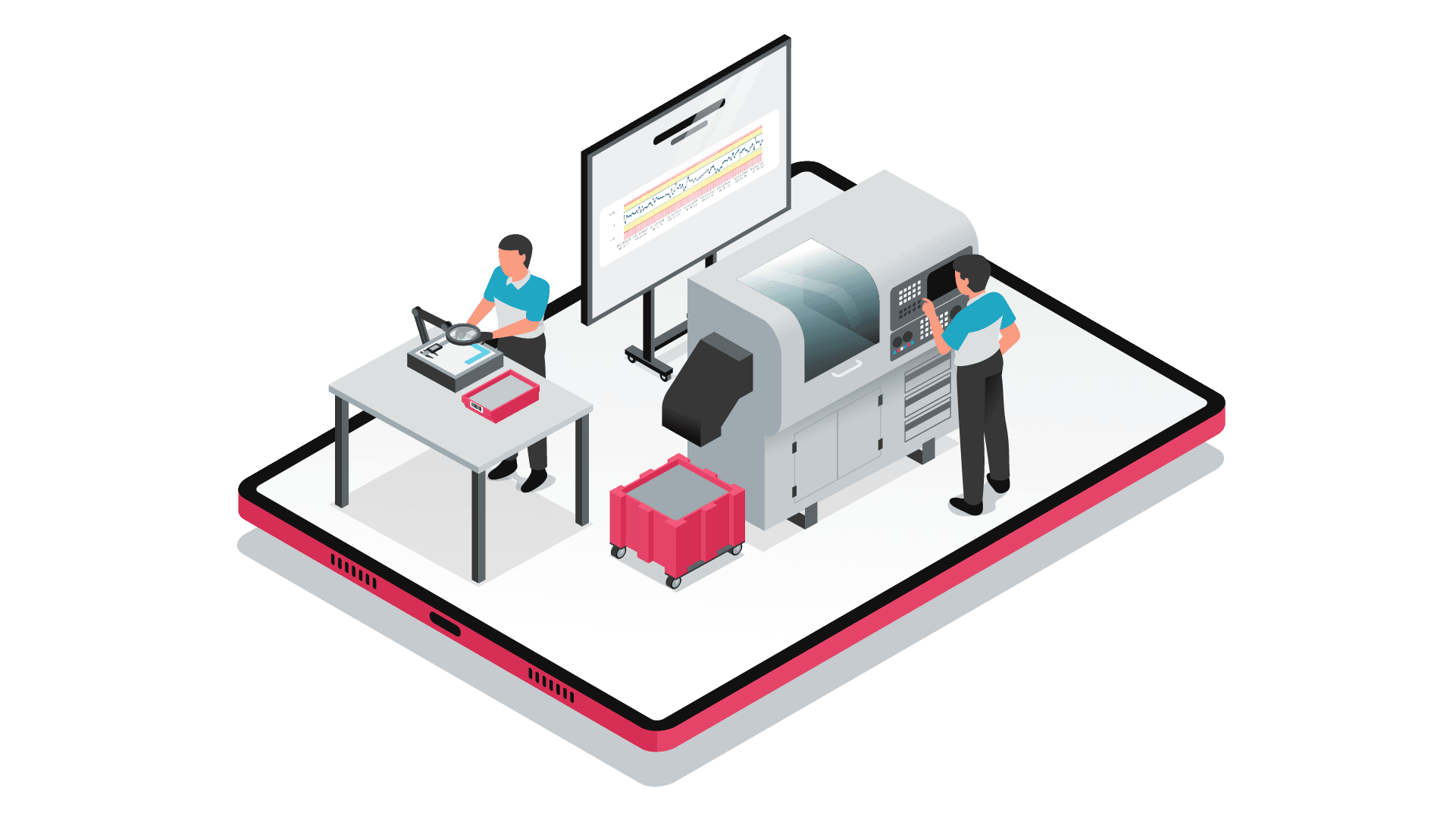Why is it important to talk about interconnectivity in the industry? The digital world has changed, and the number of solution providers has literally exploded. The era of a single ERP + MES + SPC + .... solution is dead with the advent of the Cloud. It enables you to optimize your digital coverage with expert solutions, fully configured for your own needs. Teeptrak, Kpitaine, Mercateam, Ellistat, MetronAll of these solutions, each in their own field, can help you make substantial gains. They're all useful, so to speak.
However, the use of so many different solutions seems to have one major drawback: the lack of inter-application data sharing. This is all the more true when it comes to interacting with hardware such as machine tools or measuring equipment, which are in principle unconnected.
Interconnectivity in industry therefore consists in making these systems communicate with each other. As soon as information is modified in one of the systems, it is automatically replicated. This gives the operator the impression of using a single application. Data is then synchronized between services and communication media. This action enables the status of each machine to be queried in real time.
Standards have evolved
While it's not yet possible to claim victory, the digital giants have brought true standardization to inter-application connections: APIs. API stands for Application Programming Interface. It's a common language enabling two applications to communicate with each other. APIs are everywhere: for example, when you connect your Google calendar to your Calendar application, you're using an API. In fact, every time you send a message to Facebook, check the weather or log in using your Google account, you're using an API.
Interconnectivity in the industry and work around APIs has taken longer. Inter-application data exchange has long consisted of writing a text file that is read every night after midnight by another application. However, this exchange has many shortcomings.
- It's not real-time.
- We don't know if the information has been read in return.
Fortunately, times are changing. Modern applications all offer an API interface. And if they don't, you've got to get away from them!
On the machine tool side, attitudes are also changing. More and more manufacturers are offering connectable OPC UA interfaces. If you don't yet see the point, you can be sure that, in the long term, you'll need to communicate with your machine to know its status, calculate its efficiency or correct it in real time.
Tips: when buying a new machine, be sure to ask for an OPC UA interface to be installed! This will cost you much less than upgrading the option once the machine is installed.
What's in it for me?
This obviously depends on the application chosen, so let's take two topical examples:
Example 1: Measure your machine's OEE in real time
Case study : your machine communicates with an application that measures the machine's operating status at all times. So you know every day how long the machine has been producing good parts. And for what reasons it has stopped. So you can understand why the machine isn't producing as much as you'd like. And so take the decisions that will enable you to significantly increase machine uptime, and therefore the number of good parts produced.
In this case, the gains are of the order of 5 to 10% of the machine's output, which is very substantial.
Example 2: Automatic correction of machines by part measurement
Case study : Each time you measure a part, the application calculates the corrections to be made to the machine to recenter all the features. It modifies the machine status so that the next part is perfectly centered.
Whatever the complexity of the parts to be machined, the application is extremely easy to use. Your production quality improves dramatically, and no longer depends on operators. This is exactly what Industry 4.0 is all about: autonomous production.
The savings are of the order of 90% in scrap rate reduction and 75% in set-up time reduction.
Interconnectivity in the systems industry is the key to choosing the right application in the right place for better production. We all use it on a daily basis, because applications are well connected to each other. The industry standards already exist, all that's left is to use them...



